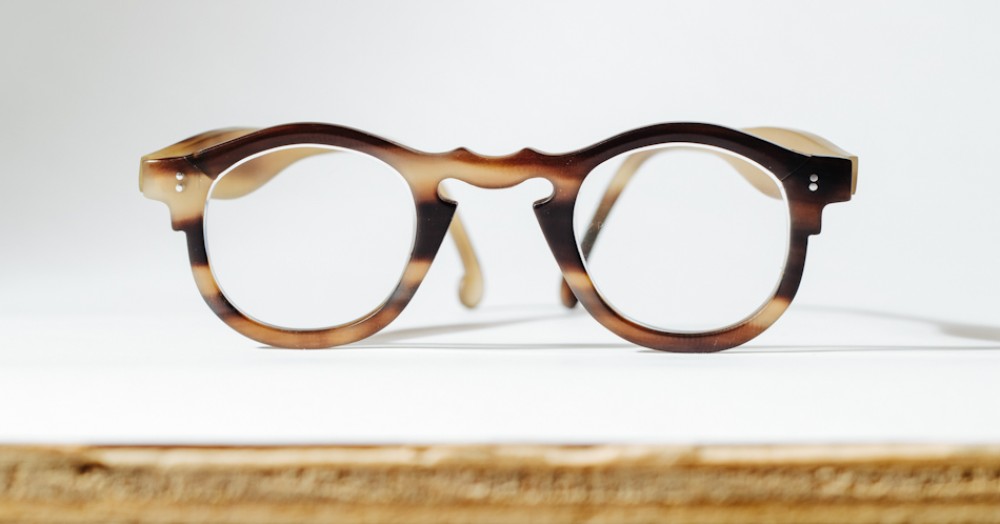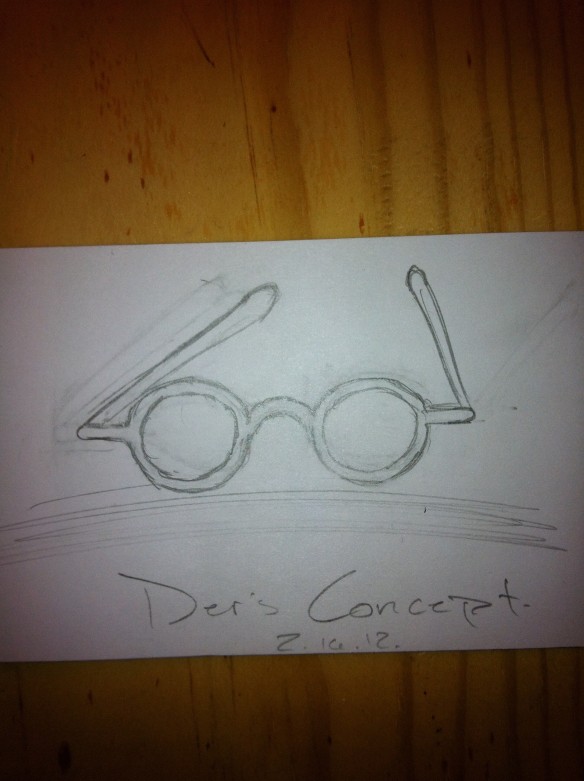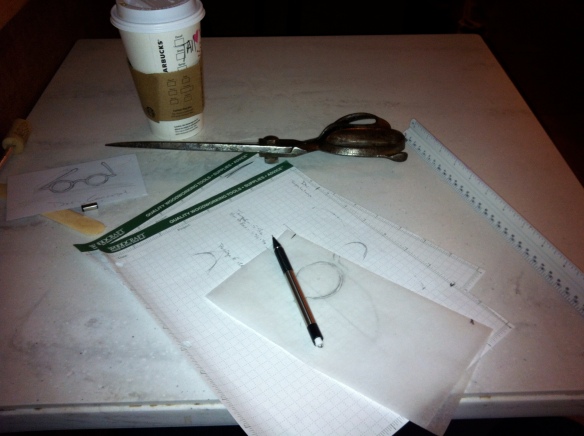Over the course of my studies in liberal arts, and in the craft of bespoke goods I have learned that there is no man who is too large, or too small, or too round, or too flabby, but only men who need good tailors. A great tailor can take any man who may be short and make him tall, or very round and house him with pronounced shoulders and a contoured waist, or a man lacking any shape at all and make him into respectable Count by accentuating the natural contours of the human figure. Many can understanding human proportions but few can master the ability to manipulate proportion in order to create a visage worth remembering.
Below is a picture I found on, The Sartorialist, that serves as an example of accentuated human proportions, specifically in the waist and narrowed shoulders–these two proportions make this man look distinguished and well put together.
What does all this have to do with eyeglasses? Proportion, proportion, proportion. It is by proportion of the human composition and my knowledge of the anatomical structure of the face, as well as, dimensional instinct I will use to create a pair of eyeglasses that best suits the face of my new client, Dr. George Grant, hereto, now referred to as “the client”:
In our first fitting he explained to me his ideal pair of eyeglasses: something more round with extensions on the sides in order to fit the width of the face without rubbing against his temples. Anyone who has had temple-rubbing frames will attest that it is extremely uncomfortable.
My concept sketch below is rough, but serves to flush out an idea:
My client, agreed in the design direction he wanted me to go; the next step was to take his measurements including temple to temple, ear to ear, bridge of the nose, and length from the prominence of the face to behind the ear.
 Shortly after I acquired his measurements, I was pretty anxious to begin making the pattern. So as soon I could find a table at the nearest coffee shop, I set to work with tools in hand.
Shortly after I acquired his measurements, I was pretty anxious to begin making the pattern. So as soon I could find a table at the nearest coffee shop, I set to work with tools in hand.
The steps for making an eyeglass pattern is very personal for me. First, I start to sketch the general movement of the frame, whether circular, oval, rectangular or square, and then feel out the specific movements of each line down to the thousands of an inch. Sometimes I move one line slightly convex or concave, and the entire composition frame changes. I journey on this process of finding exactly what is most pleasing to my eyes and then seek approval from the client.
So far my initial concept pattern is such:
 This initial concept pattern may very well change along the way. Even though it may change, my intentions are to take you through each step of the process even if it is a learning experience for me. The world of bespoke is perpetually changing client to client; no one human is exactly the same. I will have to learn and adapt quickly to varying facial structures and also be prepared to scrap almost finished products if they aren’t correct. Pursuit towards perfection is what I strive for, but not at the expense of using a laser cutter or other extensive machines because in doing so you loose what makes handmade products so valuable, the human element.
This initial concept pattern may very well change along the way. Even though it may change, my intentions are to take you through each step of the process even if it is a learning experience for me. The world of bespoke is perpetually changing client to client; no one human is exactly the same. I will have to learn and adapt quickly to varying facial structures and also be prepared to scrap almost finished products if they aren’t correct. Pursuit towards perfection is what I strive for, but not at the expense of using a laser cutter or other extensive machines because in doing so you loose what makes handmade products so valuable, the human element.

For those interested in the term, “bespoke”, I have carefully attempted defining it:
Bespoke-(pronounced bee-SPOHK) is a term used in the United Kingdom and elsewhere for an individually-or custom-made product or service. Bespoke is a form derived from bespeak, which was used as early as 1583 to refer to the ordering of goods. Bespoke and the phrase made to measure are often used interchangeable, but a very clear difference is that made to measure is a process of taking measurements from a client and applying those measurements to a pre-existing pattern in order to create a product. Whereas, bespoke means to take the measurements of an individual and create a specific pattern for that individual in order to create an exceptional product.





